Year 1204 (MCCIV) was a leap year starting on Thursday of the Julian calendar.
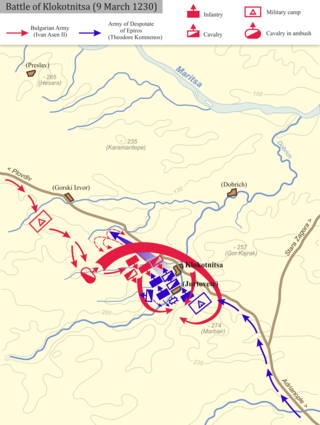
Year 1230 (MCCXXX) was a common year starting on Tuesday of the Julian calendar.

Ragnar Lodbrok, according to legends, was a Viking hero and a Swedish and Danish king. He is known from Old Norse poetry of the Viking Age, Icelandic sagas, and near-contemporary chronicles. According to traditional literature, Ragnar distinguished himself by conducting many raids against the British Isles and the Holy Roman Empire during the 9th century. He also appears in Norse legends, and according to the legendary sagas Tale of Ragnar's Sons and a Saga about Certain Ancient Kings, Ragnar Lodbrok's father has been given as the legendary king of the Swedes, Sigurd Ring.
Sagas are prose stories and histories, composed in Iceland and to a lesser extent elsewhere in Scandinavia.

The chanson de geste is a medieval narrative, a type of epic poem that appears at the dawn of French literature. The earliest known poems of this genre date from the late 11th and early 12th centuries, shortly before the emergence of the lyric poetry of the troubadours and trouvères, and the earliest verse romances. They reached their highest point of acceptance in the period 1150–1250.

Amleth is a figure in a medieval Scandinavian legend, the direct inspiration of the character of Prince Hamlet, the hero of William Shakespeare's tragedy Hamlet, Prince of Denmark. The chief authority for the legend of Amleth is Saxo Grammaticus, who devotes to it parts of the third and fourth books of his Gesta Danorum, completed at the beginning of the 13th century. Saxo's version is similar to the one in the 12th-century Chronicon Lethrense. In both versions, prince Amleth (Amblothæ) is the son of Horvendill (Orwendel), king of the Jutes. It has often been assumed that the story is ultimately derived from an Old Icelandic poem, but no such poem has been found; the extant Icelandic versions, known as the Ambales-saga, or Amloda-saga are considerably later than Saxo.
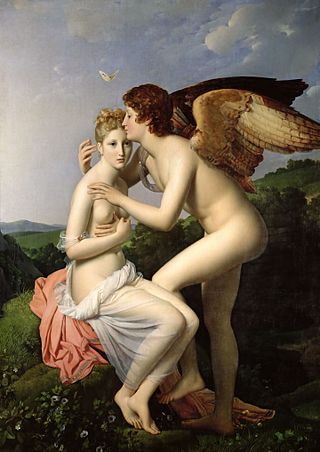
Cupid and Psyche is a story originally from Metamorphoses, written in the 2nd century AD by Lucius Apuleius Madaurensis. The tale concerns the overcoming of obstacles to the love between Psyche and Cupid or Amor, and their ultimate union in a sacred marriage. Although the only extended narrative from antiquity is that of Apuleius from 2nd century AD, Eros and Psyche appear in Greek art as early as the 4th century BC. The story's Neoplatonic elements and allusions to mystery religions accommodate multiple interpretations, and it has been analyzed as an allegory and in light of folktale, Märchen or fairy tale, and myth.
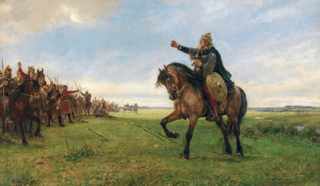
Hervarar saga ok Heiðreks is a legendary saga from the 13th century combining matter from several older sagas in Germanic heroic legend. It tells of wars between the Goths and the Huns during the 4th century. The final part of the saga, which was likely composed separately from and later than the rest, is a source for Swedish medieval history.
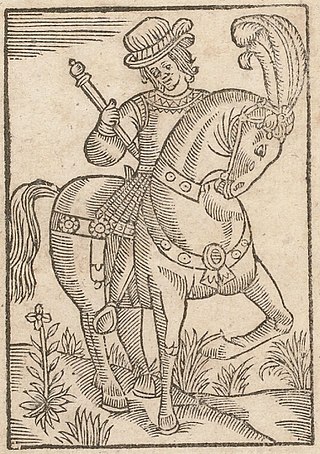
Guillaume de Palerme is a French romance poem, later translated into English where it is also known as William and the Werewolf. The French verse romance was composed c. 1200, commissioned by Countess Yolande. The prose version of the French romance, printed by N Bonfons, passed through several editions.
Floris and Blancheflour is the name of a popular romantic story that was told in the Middle Ages in many different vernacular languages and versions. It first appears in Europe around 1160 in "aristocratic" French. Roughly between the period 1200 and 1350 it was one of the most popular of all the romantic plots.
This is a bibliography of works about King Arthur, his family, his friends or his enemies. This bibliography includes works that are notable or are by notable authors.

Wolfdietrich is the eponymous protagonist of the Middle High German heroic epic Wolfdietrich. First written down in strophic form in around 1230 by an anonymous author, it survives in four main versions, widely differing in scope and content, and largely independent of each other.
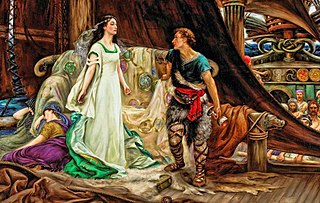
Tristan and Iseult, also known as Tristan and Isolde and other names, is a medieval chivalric romance told in numerous variations since the 12th century. Based on a Celtic legend and possibly other sources, the tale is a tragedy about the illicit love between the Cornish knight Tristan and the Irish princess Iseult. It depicts Tristan's mission to escort Iseult from Ireland to marry his uncle, King Mark of Cornwall. On the journey, Tristan and Iseult ingest a love potion, instigating a forbidden love affair between them.

The Alexander Romance is an account of the life and exploits of Alexander the Great. Although constructed around a historical core, the romance is mostly fictional. It was widely copied and translated, accruing various legends and fantastical elements at different stages. The original version was composed in Ancient Greek some time before 338 CE, when a Latin translation was made, although the exact date is unknown. Several late manuscripts attribute the work to Alexander's court historian Callisthenes, but Callisthenes died before Alexander and therefore could not have written a full account of his life. The unknown author is still sometimes known as Pseudo-Callisthenes.
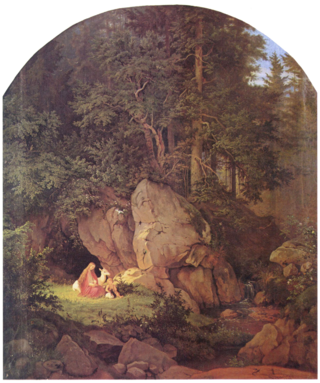
Genevieveof Brabant is a heroine of medieval legend. The story is told in the "Golden Legend" and concerns a virtuous wife falsely accused of infidelity.
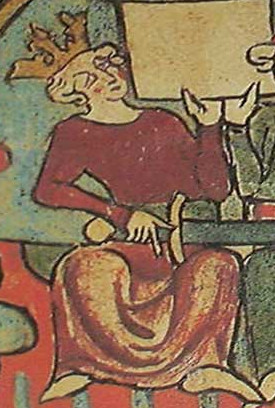
The riddarasögur are Norse prose sagas of the romance genre. Starting in the thirteenth century with Norse translations of French chansons de geste and Latin romances and histories, the genre expanded in Iceland to indigenous creations in a similar style.
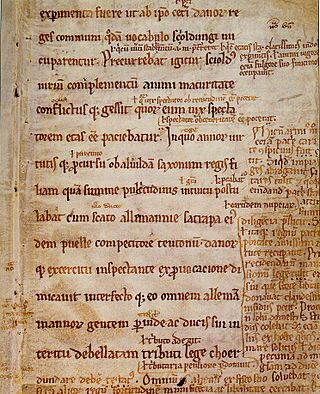
The sources of Hamlet, Prince of Denmark, a tragedy by William Shakespeare believed to have been written between 1599 and 1601, trace back as far as pre-13th century. The generic "hero-as-fool" story is so old and is expressed in the literature of so many cultures that scholars have hypothesized that it may be Indo-European in origin. A Scandinavian version of the story of Hamlet was put into writing around 1200 AD by Danish historian Saxo Grammaticus in his work Gesta Danorum. It is this work Shakespeare borrowed from to create Hamlet. Similar accounts are found in the Icelandic Saga of Hrolf Kraki and the Roman legend of Lucius Junius Brutus, both of which feature heroes who pretend to be insane in order to get revenge. A reasonably accurate version of Saxo's story was translated into French in 1570 by François de Belleforest in his Histoires Tragiques. Belleforest embellished Saxo's text substantially, almost doubling its length, and introduced the hero's melancholy.
Tulisa, the Wood-Cutter's Daughter is an Indian legend from the Somadeva Bhaṭṭa, related to Cupid and Psyche.
In folkloristics, "The Animal as Bridegroom" refers to a group of folk and fairy tales about a human woman marrying or being betrothed to an animal. The animal is revealed to be a human prince in disguise or under a curse. Most of these tales are grouped in the international system of Aarne-Thompson-Uther Index under type ATU 425, "The Search for the Lost Husband". Some subtypes exist in the international classification as independent stories, but they sometimes don't adhere to a fixed typing.
The Man and the Girl at the Underground Mansion is a Danish folktale collected by theologue Nikolaj Christensen in the 19th century, but published in the 20th century by Danish folklorist Laurits Bodker.












